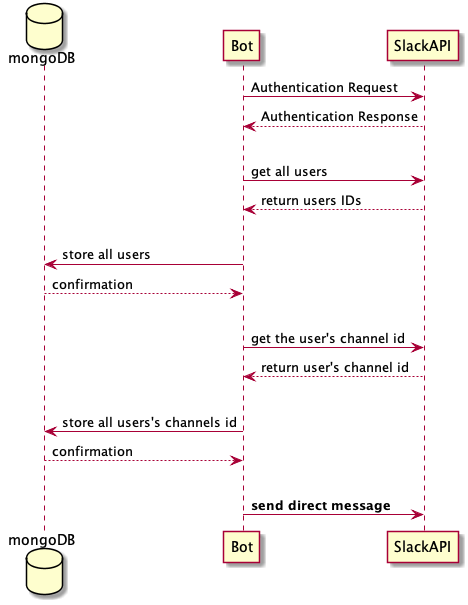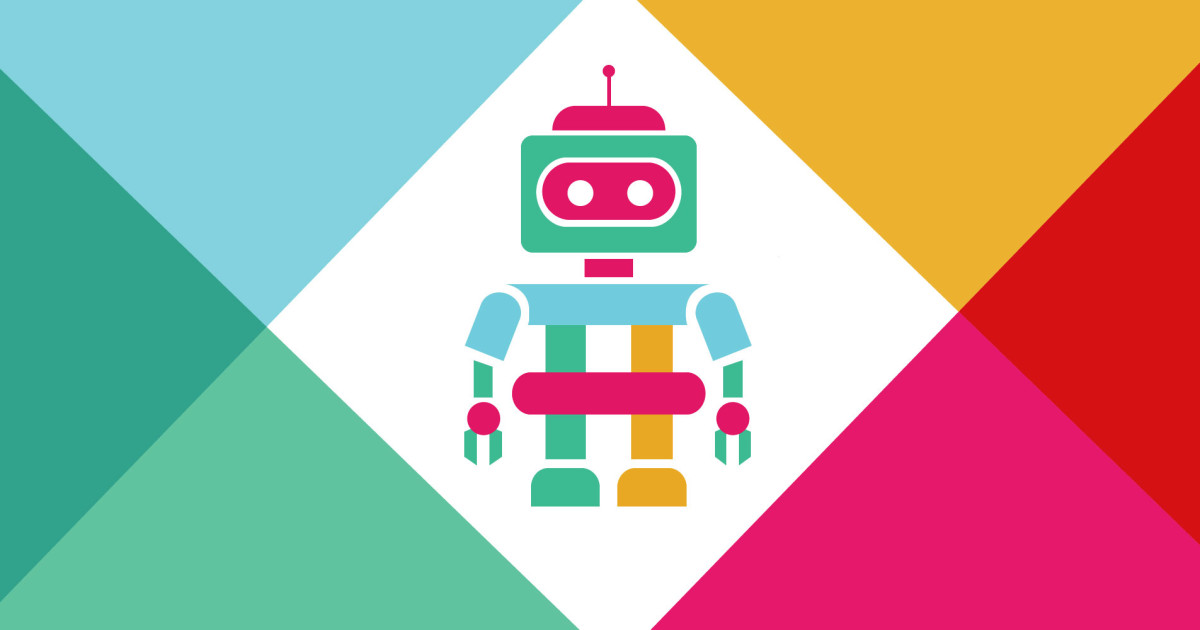In stead of going over all the different steps, I’m going to share an overview about the process which I followed for alterego
Luckily, the Slack api is really well documented. It makes quite straight forward the develop process.
Design decisions
- The project was designed to be cloud based with the stack: helm, docker, kubernetes, python and mongoDB
- the bot and mongoDB will be two
microservices - the bot will send a predefined text to a group of slack users
- the bot will start daily (from Monday until Friday) at 11.30, will send the messages and will finish its execution
- mongoDB will have a
pvcdefined, in order to avoid data loss.
To have in mind
Being the first time that I have dug on Slack API I would like to point out:
- Every user has an unique id (no surprise over here)
- Every user has an unique channel id. This channel will be the one which we will interact.
- Each action (even a reaction) in a specific channel, has related a timestamp.
- Depending on the amount of request to the Slack API in a sort time, we can get a nice answer “too many petitions” rate limits
Flow overview
Here we can see the flow to obtain all private channels for the Slack users:

This flow, should will happen only once. After that the interaction will be between the bot and the Slack API.
Summarising
Creating a first version of a Slack Bot with some direct interaction with users, is super fun and highly recommended due to its well documented API giving a quick final result.
In the first version that I made, didn’t put effort on the robustness of the communication between the bot and the API. This is a key feature if you want a permanent solution running smoothly.


Comments